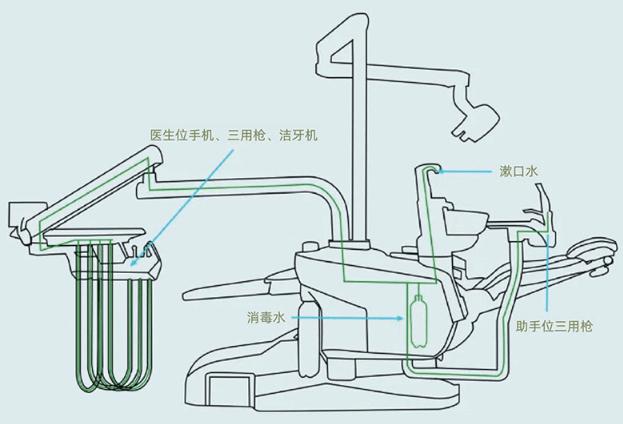Dental Chair Instrument Tray: A Comprehensive Guide
Importance of the Instrument Tray in Dental Procedures
Importance of Dental Chair Instrument Trays in Infection
Types of Dental Chair Instrument Trays
Dental chair instrument trays come in various types, each designed to cater to different needs and preferences of dental professionals. These include the basic tray, mobile tray, over-the-patient tray, combination tray, and wall-mounted tray. Each type has its unique features, advantages, and disadvantages, allowing dental professionals to choose the one that best suits their practice and the specific procedures they perform.
●Basic Tray - The basic tray is the most common type of instrument tray. It is portable, easy to use, and can be placed on the arms of the dental chair. However, it has limited space for instruments and can be challenging to access when working on patients.
●Mobile Tray - The mobile tray is similar to the basic tray, but it comes with wheels, making it easy to move around the dental office. This tray is ideal for dental professionals who need to move between patients frequently.
●Over-the-Patient Tray - The over-the-patient tray is fixed to the dental chair, allowing the dentist to work efficiently while seated. It provides ample space for instruments and can be adjusted to fit the patient's position. However, it can be obstructive and uncomfortable for some patients.
●Combination Tray - The combination tray is a mix of the basic tray and the over-the-patient tray. It is versatile and can be used for a wide range of dental procedures. However, it is bulky and requires more space in the dental office.
●Wall-Mounted Tray - The wall-mounted tray is fixed to the wall and can be adjusted to fit the dentist's height. It provides ample space for instruments and is suitable for dentists who work on patients for long periods. However, it is not portable and requires a designated space in the dental office.
Parts and Functions of Dental Chair and Instrument Tray
Dental chairs and their accompanying instrument trays are essential for all dental procedures. They are designed with various parts and functions that assist in ensuring comfort for the patient and efficiency for the dental professional.
● Dental Chair: The dental chair is a specially designed chair that provides comfort and accessibility for both the dentist and the patient. It has adjustable parts, such as the backrest, headrest, and seat, to accommodate different patient sizes and treatment procedures. Some chairs also have a built-in light source for better visibility.
● Instrument Tray: This is a platform, either fixed or mobile, where dental instruments are placed. It can be attached to the dental chair or be standalone. The tray helps in organizing the instruments, making them easily accessible during treatment procedures.
● Handpieces: These are tools used for cutting, drilling, and polishing teeth. They are generally kept on the instrument tray and come in various sizes and shapes for different dental procedures.
● Burs and Bur Blocks: These small rotating instruments are used for shaping, polishing, or removing teeth. They are stored in the instrument tray and come in different shapes and sizes.
● Syringes: Used for administering anesthesia or irrigating the mouth, these are also kept on the instrument tray.
● Mirrors and Probes: These tools are used for examining the mouth and teeth. They are stored on the instrument tray and come in various sizes and shapes to accommodate different procedures.
● Other Accessories: Other components, such as cotton rolls and saliva ejectors, help keep the mouth dry during procedures. These are also stored on the instrument tray.
Understanding the parts and functions of the dental chair and instrument tray can help dental professionals optimize their use and maintain efficiency during procedures
How to Organize the Tray for Efficient Use
Guidelines for Proper Infection Control
Role of Dental Professionals in Maintaining a Safe Environment for Patients
Conclusion
Dental professionals must prioritize infection control in the dental office by following specific guidelines and educating their patients about proper oral hygiene practices. By doing so, they can ensure a safe environment for their patients and prevent the spread of infections.



Leave a comment